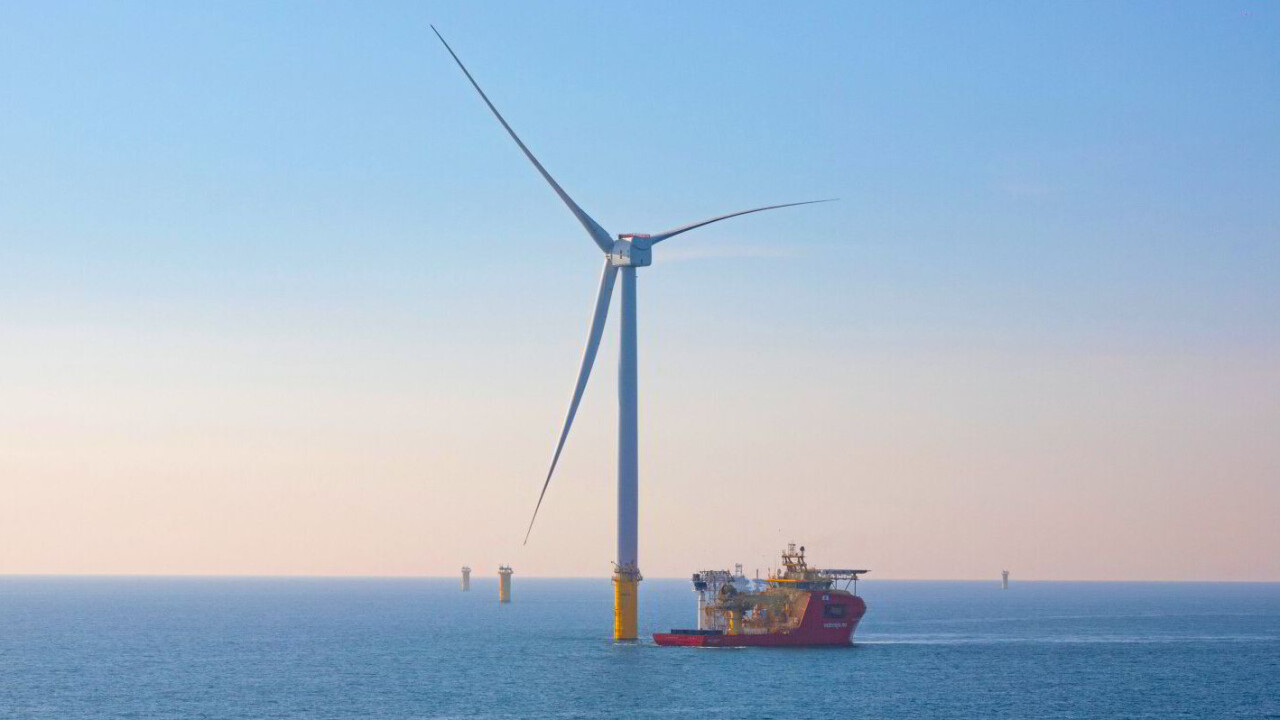
The world’s largest offshore wind farm has started exporting power to the UK grid after its first turbine came online this weekend.
The Dogger Bank Wind Farm, currently under construction in the North Sea, will comprise a total of 277 turbines once complete in 2026. The huge plant is expected to churn out 3.6GW of power — enough for 6 million UK homes.
Prime Minister Rishi Sunak hailed the milestone as a boost to energy security and job creation. “Offshore wind is critical to generating renewable, efficient energy that can power British homes from British seas,” he said.
Dogger Bank is an attractive location for offshore wind farms because it is located far away from shore, avoiding complaints about the visual impact of wind turbines. The scheme is central to the government’s plan to ramp up offshore wind capacity from 13.7GW to 50GW by 2030 — enough energy to power every home in the country.
China (49%), the United Kingdom (22%), and Germany (13%) currently account for more than 75% of global offshore wind installed capacity.
While positive news for the UK’s energy transition, the powering up of Dogger Bank comes amid a watering down of climate policy by the country’s Conservative government.
Restrictions on onshore wind and solar
In the latest move against renewable energy projects, Sunak is planning to clamp down on solar panel installations across British farmland, which campaigners say will stall the UK’s green transition and raise bills, the Observer reported this week.
Under the plans, solar farms could be blocked by local authorities if officials believe a prospective project could “put food security at risk.” Downing Street is expected to cite food shortages in Europe and the war in Ukraine to justify the decision, with environment secretary Therese Coffey also reportedly backing the move.
The proposal will no doubt be welcomed by many Conservative MPs and rural residents, who have been campaigning against new solar farm developments, such as the proposed Sunnica Energy Farm, for years.
Despite concerns, ground-mounted solar panels currently cover just 0.1% of all land in the UK. Even government plans to significantly scale up solar in line with its net-zero target are expected to bring this up to just 0.3% of the UK land area.
Your regular reminder that solar farms take up less of the UK than golf courseshttps://t.co/hyoP2pvG9G pic.twitter.com/MJnvNB4KNx
— Simon Evans (@DrSimEvans) October 7, 2023
“Solar energy will help us move away from polluting fossil fuels, and in the long term protect UK farming from climate breakdown. Restricting ground-mounted solar would be gravely short-sighted,” Lydia Collas, senior policy analyst at Green Alliance, told the Guardian.
Some even took to social media to express their dismay at the proposal. “I guess Rishi’s rich landowner mates don’t want their country views spoiled,” said one commenter on Reddit. Another user rightly pointed out that you can easily farm and generate power on the same land — a system known as agrivoltaics.
The plans threaten to stifle the growth of solar power in the country by making it harder for new projects to gain planning permission.
It follows an almost decade-long policy that effectively banned the installation of new onshore wind turbines, one of the cheapest sources of electricity currently available.
The UK government’s aversion to onshore wind dates back to David Cameron’s stance in 2015, which Sunak vowed to uphold when he ran for the Tory leadership last year. Sunak said at the time that he instead wanted to pursue offshore wind due to the “distress and disruption” onshore wind farms can cause to local residents.
Even though the de facto ban was relaxed last month, onshore wind in England still faces higher planning barriers than anything else, including new coal mines, according to climate advocacy group Possible.
The point of all of this is that British policymakers are effectively stalling the energy transition by tying up key onshore renewable energy projects in the slow (and often right-leaning) legislative processes of local authorities.
This seemingly contradicts the UK’s future energy commitments, which aim to ramp up onshore wind and solar from, respectively, 14.5GW and 13.8GW today to 35GW and 53GW by 2035.
Sunak’s anti-green agenda
Unfortunately though, the restrictions on new onshore wind and solar imposed by the UK government are pretty on brand.
In a speech on September 20, Rishi Sunak promised a “new approach” that in effect significantly waters down Britain’s climate policy.
In that speech, Sunak announced that the 2030 phase-out of new petrol and diesel cars will be pushed back to 2035, as well as weakening the 2035 gas boiler phase-out, confirming it will apply to far fewer homes.
Moving too fast on green policies, he said, “risks losing the consent of the British people.”
The move came just two months after the UK controversially granted 100 new licenses for oil and gas exploration and production in the North Sea.
Sunak has since faced mounting criticism for his alleged anti-green agenda, including from those within his own party.
Former US Vice President Al Gore described the changes as “shocking and disappointing” and “not what the world needs from the United Kingdom.” Britain’s weakening of climate policies comes at a time when extreme weather events are becoming more frequent across the world, including the UK, as a result of global heating. Only through the swift rollout of a variety of renewables can we avert even greater disaster, urge scientists.
Get the TNW newsletter
Get the most important tech news in your inbox each week.




